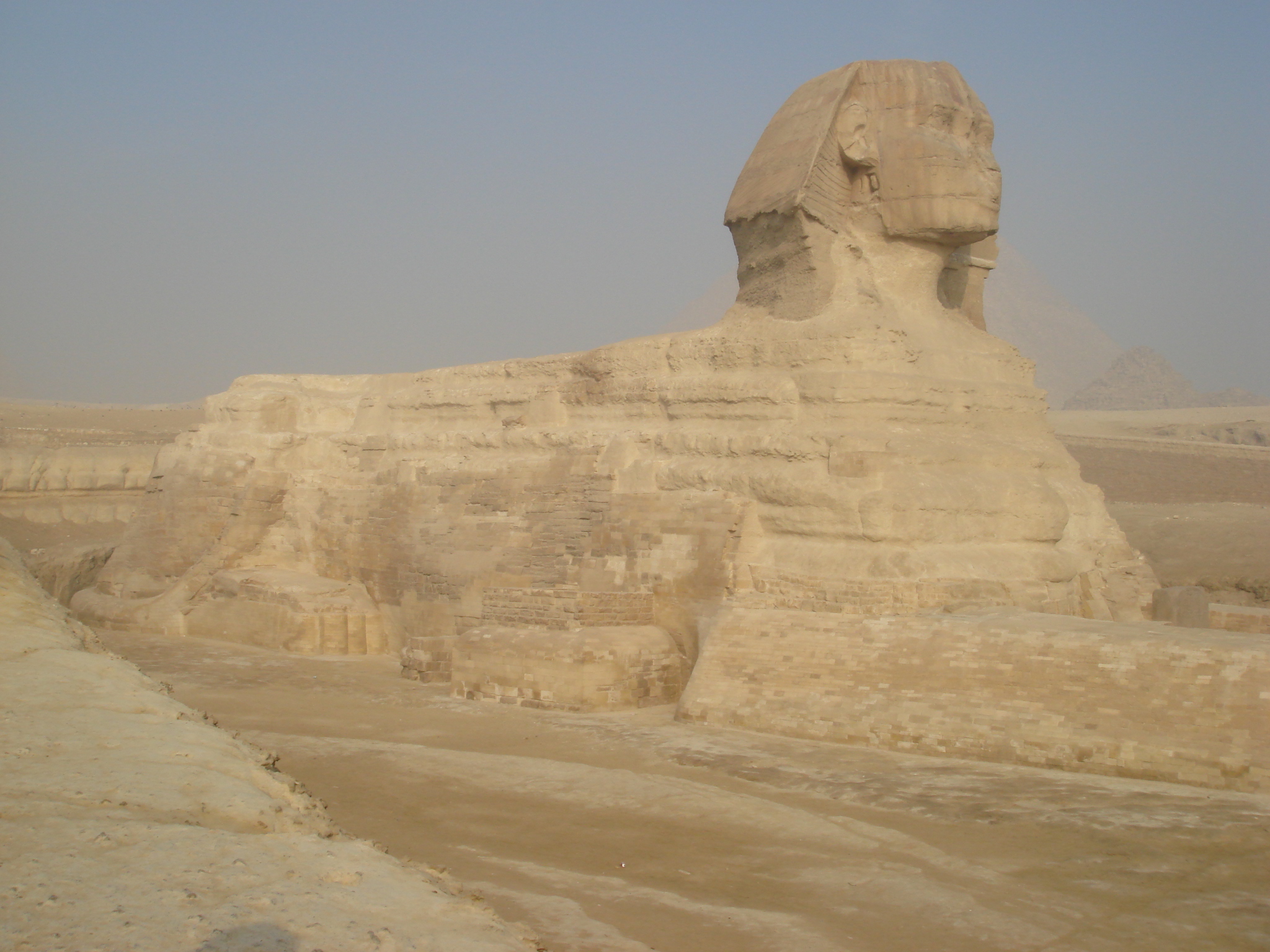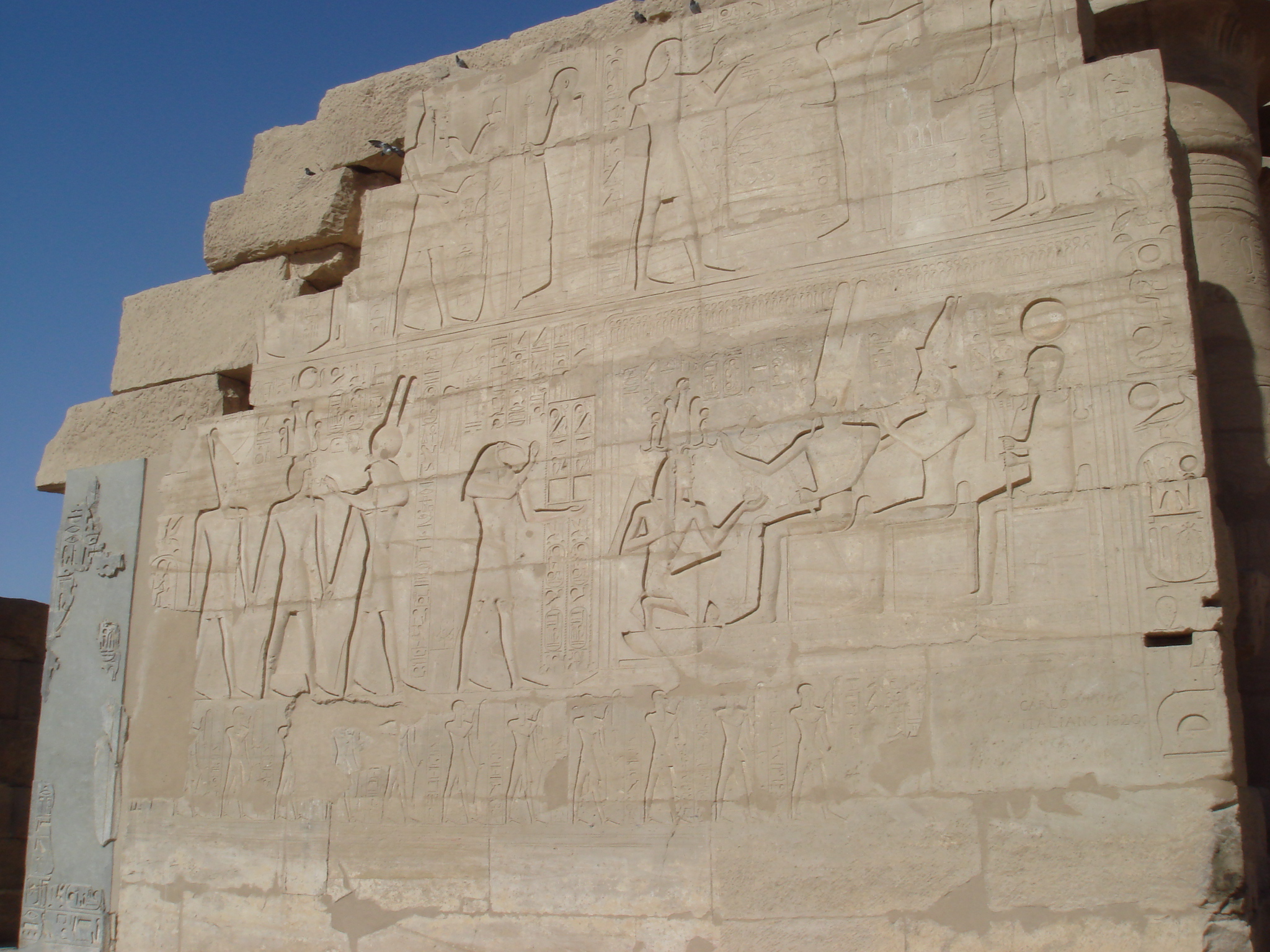Books on Ancient Egypt
Medhananda’s research into the symbols of Ancient Egypt presents the thesis that the Egyptian images contain the teachings of a rich psychology of self-knowledge. Behind the strange gods and figures he perceives a multiplicity of archetypes, inner movements, aspects of ourselves, as well as universal principles. RE the sun, KHEPER the dung beetle or MEHEN the snake reveal themselves as psychological teaching paradigms, as soul powers we have to discover and perfect in our way to total self-awareness… All works are originally written in English, printed and sold so far in South India only, at www.sabda.in. If you are a translator or a publisher and would like to translate or publish those books in Europe or America, please contact us, we will be pleased to hear from you. See also www.liberating-symbols-publishing.com.
The Way of Horus
Readers of this book will learn that during the ‘Golden Age’ of ancient Egypt human consciousness was quite different from our mainly mentally dominated consciousness; it was turned towards the inner movements of the soul. What our ancestors thus perceived and ‘saw’, they expressed in images, in symbols. The author is convinced that rather than taking the Egyptian hieroglyphs and images at their face value, the deeper meaning behind should be explored. In place of a pantheon of primitive Gods and strange figures he perceives a multiplicity of soul-powers representing inner movements of consciousness, aspects of ourselves, as well as universal principles. Symbols are like mirrors reflecting the multi-facetted reality.
ISBN: 978-81-86413-37-1, soft cover, 281 pages with many illustrations, order at www.sabda.in
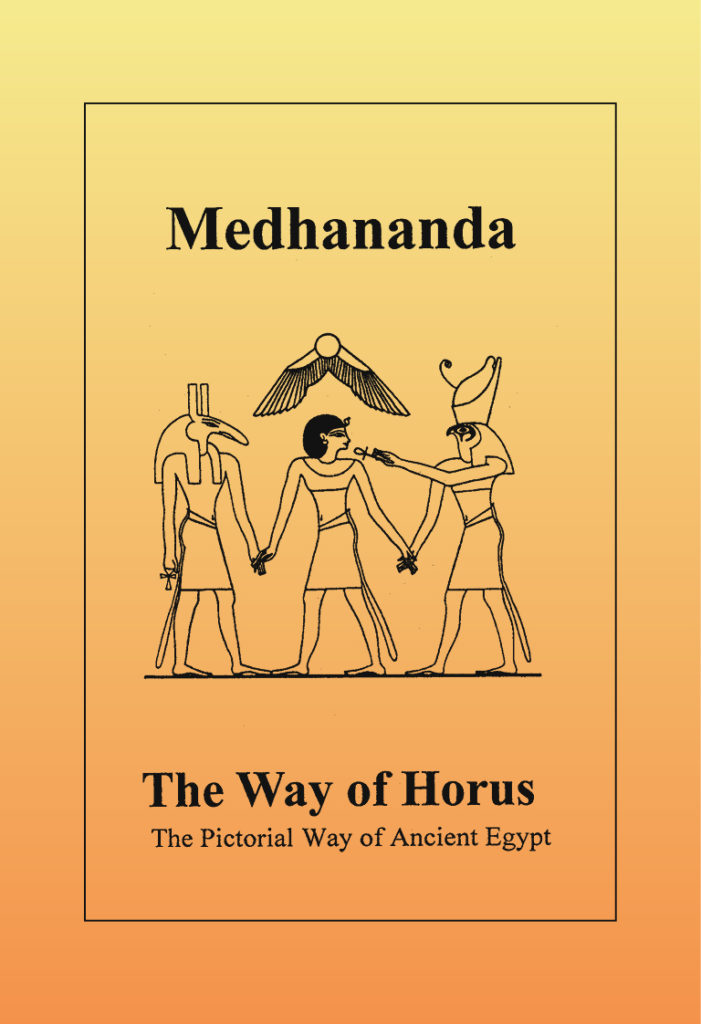
Archetypes of Liberation
This book takes a close look at what lies behind the many Egyptian figures and gods with their fantastic crowns or strange animal-heads. The author sees them as archetypes, as expressive symbols for psychological principles, archetypes, functions and structures of man’s own complex being. Medhananda: “Let us not take them [the Egyptian images] for what they appear to be. What seem to be objects, animals, gods, or kings, are all symbols for those yet unknown parts of ourselves we must meet and become acquainted with on the way to total self-awareness … … all these symbols and images are always ourselves or parts of ourselves.”
ISBN: 978-81-86413-38-8, soft cover, 243 pages with many illustrations, order at www.sabda.in
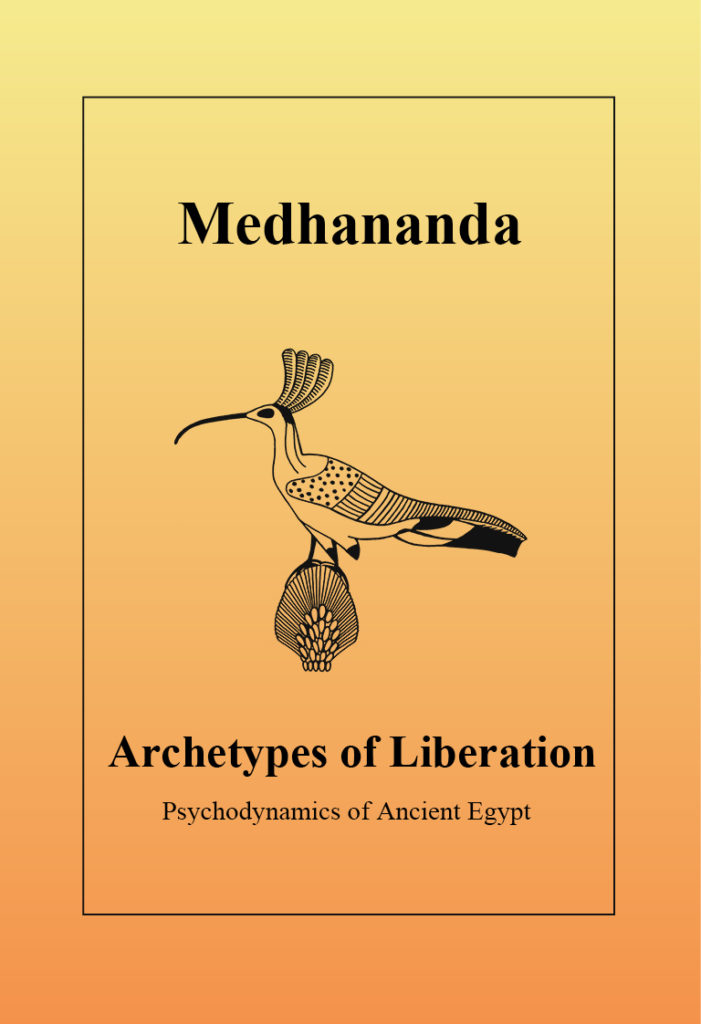
The Pyramids and the Sphynx
In this book new answers are proposed regarding the purpose of the pyramids. Man in the 20th and 21st centuries has built expensive and complex equipment in an attempt to penetrate the secrets of matter, the atom and the universe. Could it be that thousands of years ago the ancient Egyptians erected these majestic stone structures in an attempt to penetrate the secrets of their inner psychological structure? We read: “For at least 5000 years the pyramids have been standing in silence like giant koans, asking the one essential question – who am I – and who are you? Discover my secret and you will have discovered yours.” And who or what is the riddle of the Sphinx? Can it be a mirror of unrevealed secrets in the human subconscious? The author examines these topics and gives us new insights into those ancient mysteries.
ISBN: 978-81-86413-39-5, soft cover, 127 pages with many illustrations, order at www.sabda.in
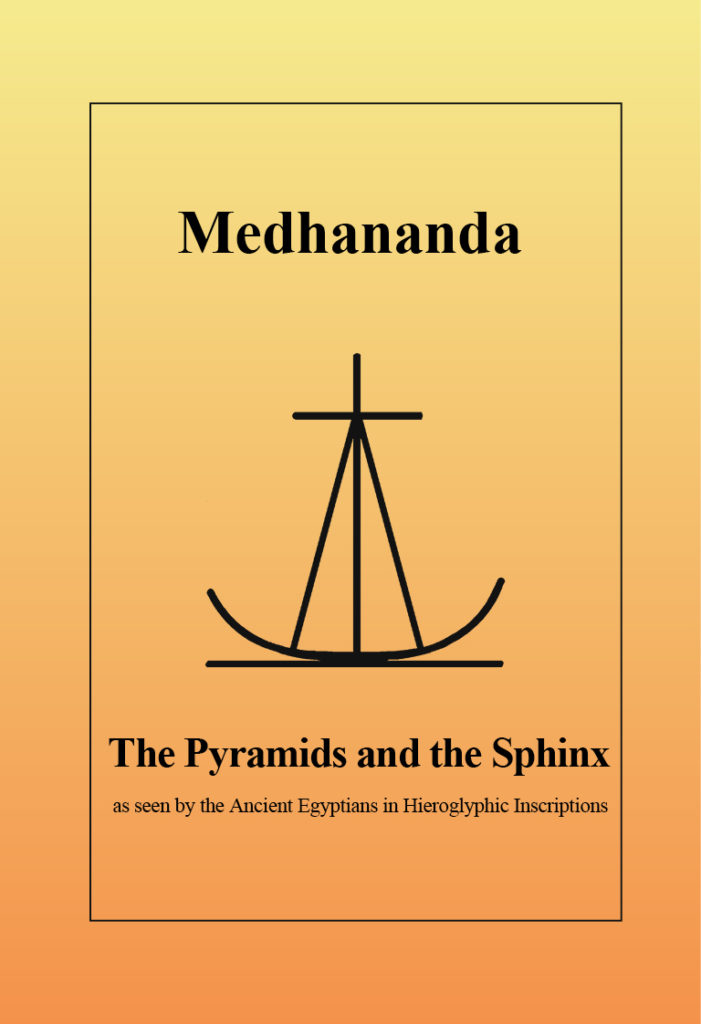
The Royal Cubit
In this book the reader is introduced to the Egyptian royal measuring tool, an instrument 52 centimeters long, used by architects, engineers and masons to build pyramids and temples. On the upper face of the rod there are 28 hieroglyphic images: a list of Egyptian Gods (Neteru), perceived by Medhananda as soul powers, states and phases of consciousness. They correspond to the moon’s 14 vaning and 14 vaxing phases recycling into full moon, a symbol for illumination, enlightenment. The secret codex was meant as a programme of self-knowledge and transcendence, an ancient discipline of self-culture, aimed at developing the higher ranges of being. We find 28 exercises, each helping us to ,build’ our own inner temple – our integral self – with the ‘stuff’ of consciousness.
ISBN: 978-81-86413-40-1, soft cover, 247 pages with many illustrations, order at www.sabda.in
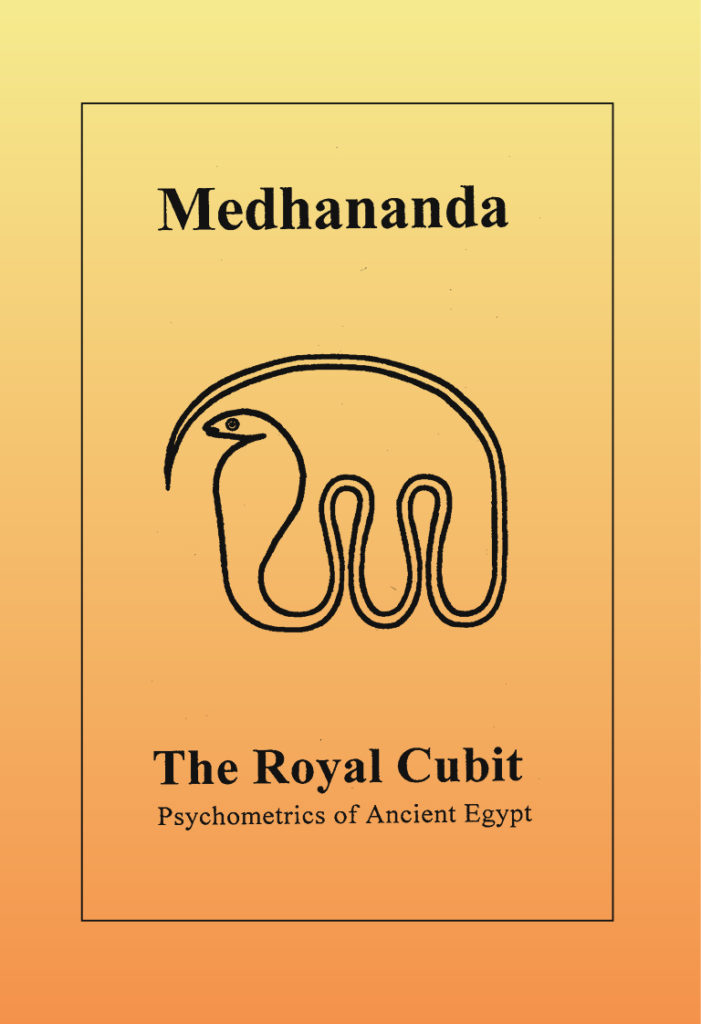
The Ancient Egyptian Senet Game
This book examines the ancient game board of the Egyptian pharaohs with its thirty symbols. Medhananda found that each of these “houses” or symbols corresponds to a psychological force-field, to an archetype within us. The reader is invited to explore these force-fields in order to discover the many ways of being, to become more conscious of the multifaceted self. Many parts of the ancient hieroglyphic “Great Senet Text” are translated and interpreted by the author.
ISBN: 978-81-86413-36-4, soft cover, 389 pages with many illustrations, order at www.sabda.in
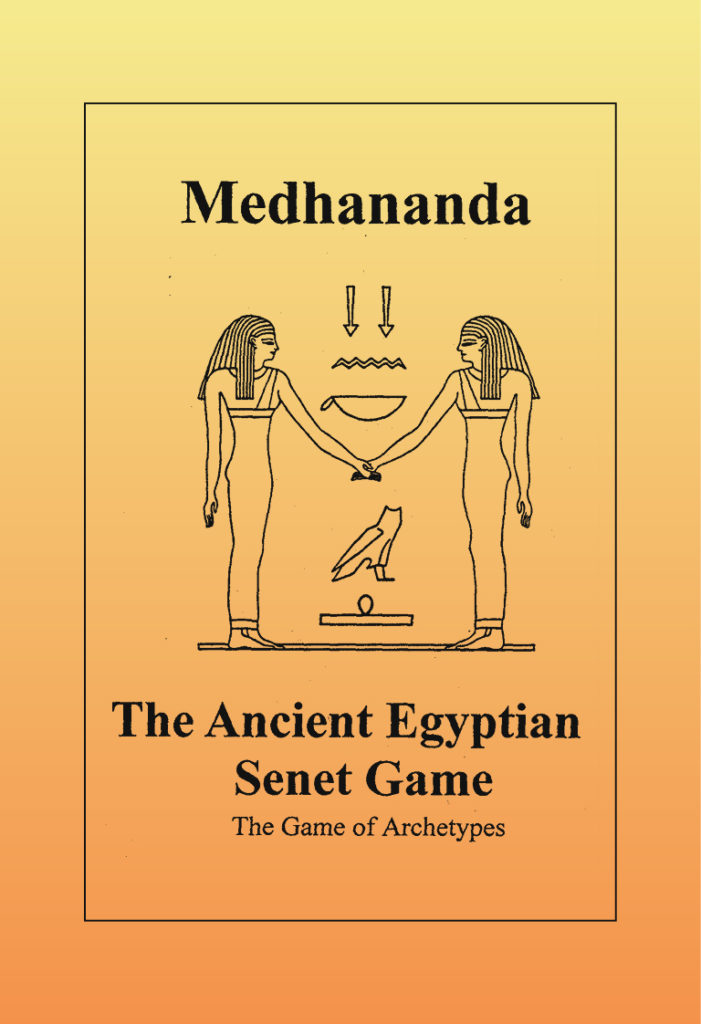
Other books by Medhananda
With Medhananda on the Shores of Infinity
On the Shores of Infinity consists of autobiographical material compiled by Yvonne Artaud from notes and narrations of Medhananda, through which we get glimpses of his rich inner and outer life – his childhood and study period in Germany, his long stay in French Polynesia with encounters of native tribal chiefs who initiated him into their ancient Gnosis, his years in South India on the path of the Integral Yoga of Sri Aurobindo and The Mother. We get insights into his deep inner experiences, his research in self-awareness and oneness, his capacity to recognize the hidden messages of ancient symbols and ‘see’ their psychological and spiritual contents. His thoughts radiate with delight and joy which the reader can easily feel as a warm and tender atmosphere in this book. Sri Aurobindo once wrote: “By exceeding body and mind I become one with all things in being and in experience, even with the stone and the tree”. That was Medhananda’s hidden way of living.
ISBN: 978-81-86413-08-1, soft cover, 151 pages, order at www.sabda.in
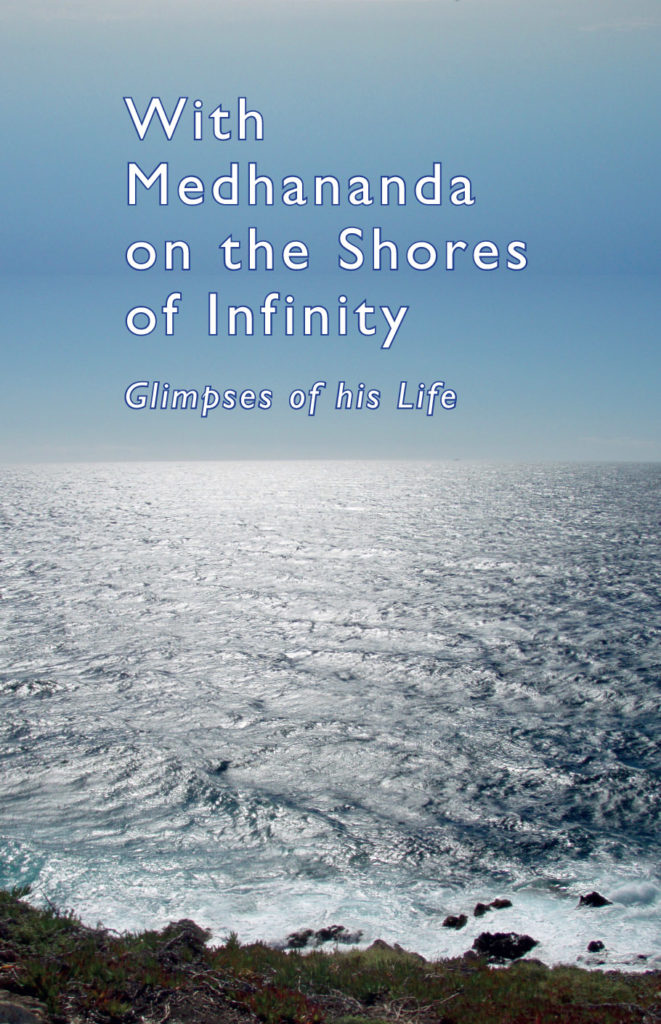
On the Threshold of a New Consciousness with Medhananda
The egocentric mental-rational man is not the last stage in the evolution of consciousness. According to Sri Aurobindo, Medhananda, Jean Gebser (and others) a new dimension of consciousness wants to be realized in man today: We are in a transitional epoch in which we have the chance and also the task to go beyond dualistic “either/or” thinking. What our mind perceives as opposites – e.g. science/spirituality, matter/vibration – a higher level of consciousness within us recognizes as complementary aspects of the one reality, or – such as with the apparent opposition of unconscious/conscious, irrational/rational – as different degrees, intensities, dimensions of the same reality. Medhananda’s illuminating thoughts are based on his own spiritual experiences as well as on the statements and realizations of his teacher Sri Aurobindo and the discoveries of quantum physicists. He shows us connections and links everywhere and invites us to perceive and experience the transparent, integral wholeness of the world – the spiritual-divine origin – in us and in everything.
ISBN: 978-81-86413-14-2, hard cover, 168 pages, order at www.sabda.in

Secret Wisdom
Medhananda, consciousness researcher and interpreter of symbols in ancient cultures, examines in this book the Greek myth of Herakles, a Pelasgian and an African myth, two ancient Egyptian picture sequences, a parable from India, two of Grimm’s fairy tales and the Gospel of Thomas (which was buried in the sand in Egypt until 1945). In all the ancient messages, Medhananda discovers a symbol language with which spiritual experiences and inner maturing processes were expressed. Instead of taking the stories literally, we learn to see the various figures, animals and elements in them as symbols for soul forces, archetypes, functions and possibilities within ourselves: As in a mirror, aspects and movements of consciousness of our own being can be perceived behind the symbols. The myth of Heracles, for example, shows us how to become a true hero: by practicing and developing inner, psychological powers. This new understanding of the ancient texts helps us to deepen our self-awareness, to get to know the possibilities of our multifaceted being, to grow and transform our small ego formation into a greater self.
ISBN: 978-81-86413-32-6, soft cover, 206 pages, order at www.sabda.in

The Garden of Man
This book contains three interesting contributions to the understanding of ancient symbols:
- An Egyptian message about a ‘Garden of Man’ from the 3500-year-old tomb of Amenemhet is presented in three different ways: – depicted in the original hieroglyphs and images, – translated into English words by the famous Egyptologist Sir Alan Gardiner, – and contemplated by Medhananda who tries to convey the deeper meaning behind the simple statements, and reveals a dynamic psychological content in them. We see that the message expresses profound self-knowledge. ‘The Garden’ is a psychological garden in ourselves, which we are invited to discover and to cultivate and transform into paradise.
- Medhananda shows and comments on the ancient imagery of the symbol ‘tree’, in India known as the Vedic Ashwattha (who has its roots in heaven and its branches on earth) or the ficus religiosa (the tree of illumination of Buddhism). In other cultures it appears as the Nordic Yggdrasil, or the oracle tree of Dodona in Greece, or the totem tree of North America, or the ora of Polynesia. This ancient symbol is still alive, also in the Christmas-tree…
- An old Egyptian fairy tale is translated and interpreted for the first time by Medhananda.The book contains 87 pages, with numerous hieroglyphs and symbol-images.
ISBN: 978-81-86413-35-7, soft cover, 87 pgaes, order at www.sabda.in
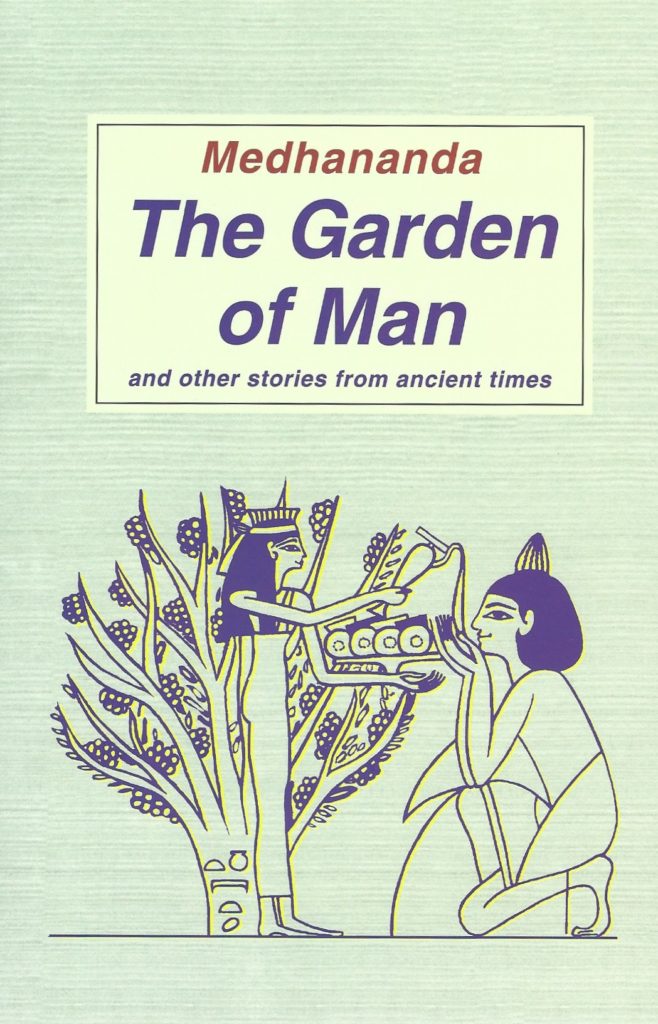
The Way out is Up and other stories from Equals One
For about fifteen years Medhananda edited the journal Equals One, (or =1). This publication became an organ for the expression of his creativity founded on a widely-educated mind and on his extraordinarily rich inner life and experiences. The title is the shortest possible formula to remind us that behind the multiplicity of appearances there is an essential oneness of things, a oneness which reconciles all dualities, gives meaning to all events. This collection of articles and stories, full of illuminating humour and provocative new viewpoints reveal deep spiritual realities. In this volume are presented some of the most striking shorter stories from that journal, while its companion volume Guardians of Oneness and other Tales from Equals One features some of the longer ones. 155 pages, with illustrations by Yvonne Artaud and T. Fujikawa
ISBN: 81-86413-24-3, soft cover, 155 pages, order at www.sabda.in
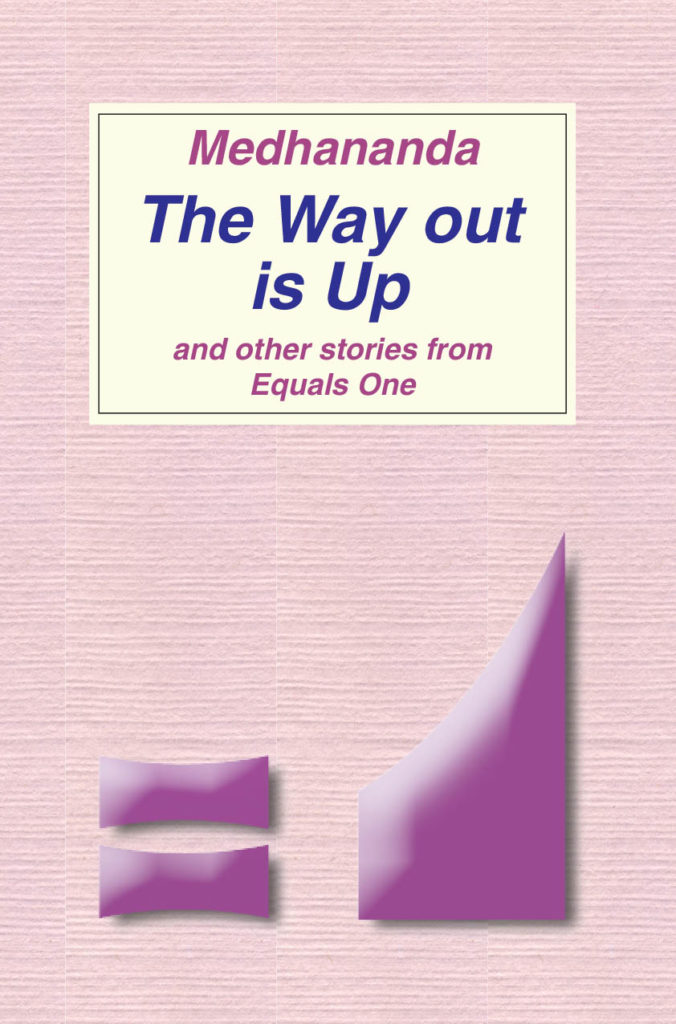
Guardians of Oneness and other tales from Equals One
Equals One, (or =1) was the journal edited by Medhananda from 1965 onwards. His creative, wide-ranging articles written in a humorous esprit were often edited by him under pen-names, each representing a different aspect of his rich personality, another mode of consciousness, one facet of his vast being: ‘Benedictus Montecrossa’ for example, which means in Latin ‘The Blessed One who has crossed over the Mountain’, refers to a state of Ananda (bliss), arising from plenitude, transcending the lower nature and crossing over into the higher being. In this volume are gathered some of the longer pieces, while its companion volume The Way Out is Up features some of the most striking shorter ones. 199 pages, with illustrations by Yvonne Artaud and T. Fujikawa
ISBN: 978-81-86413-23-4, soft cover, 199 pages, order at www.sabda.in
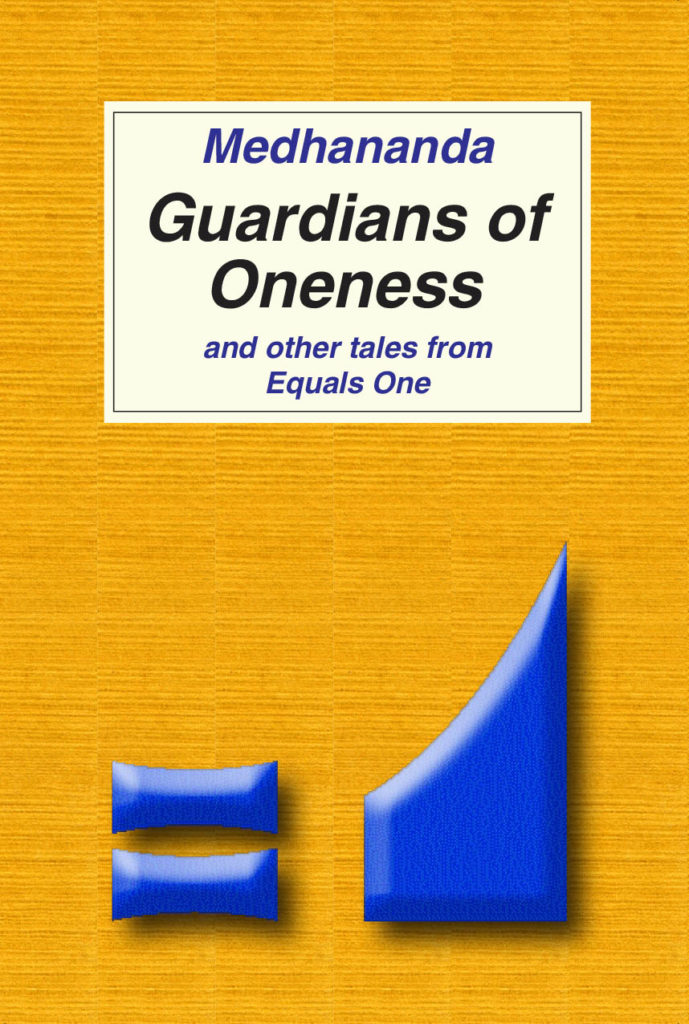
The Eternity Game
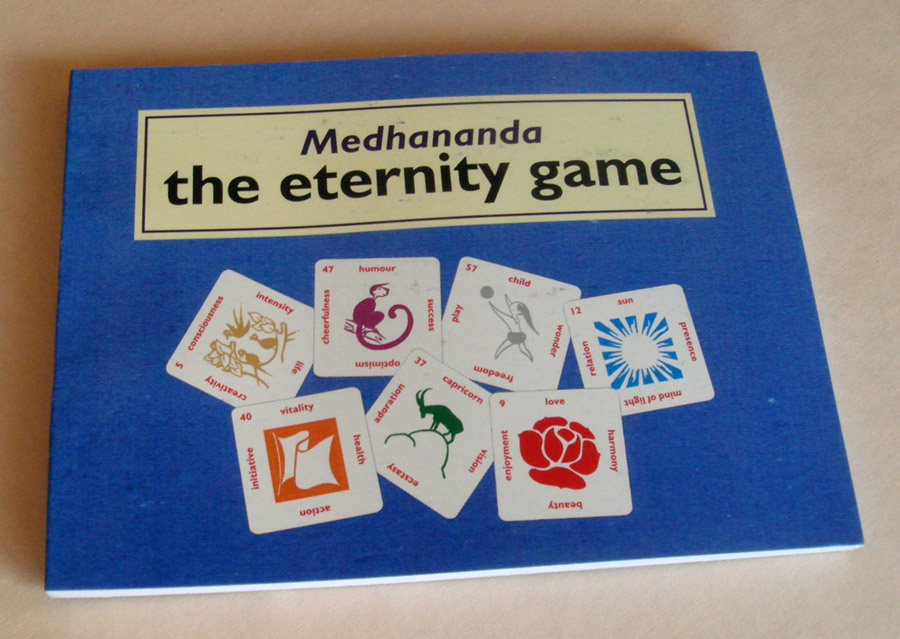
The Eternity Game is an ontological, a meditation game (comparable to the Chinese I Ching or the Tarot).
It contains 64 square cards, each showing a symbol in the centre, and on the margins 4 words, 4 aspects of the symbol [see below]. The game contains also a booklet with suggestions of various way of playing, with indications of how to consult the game, and with interpretations for each symbol.
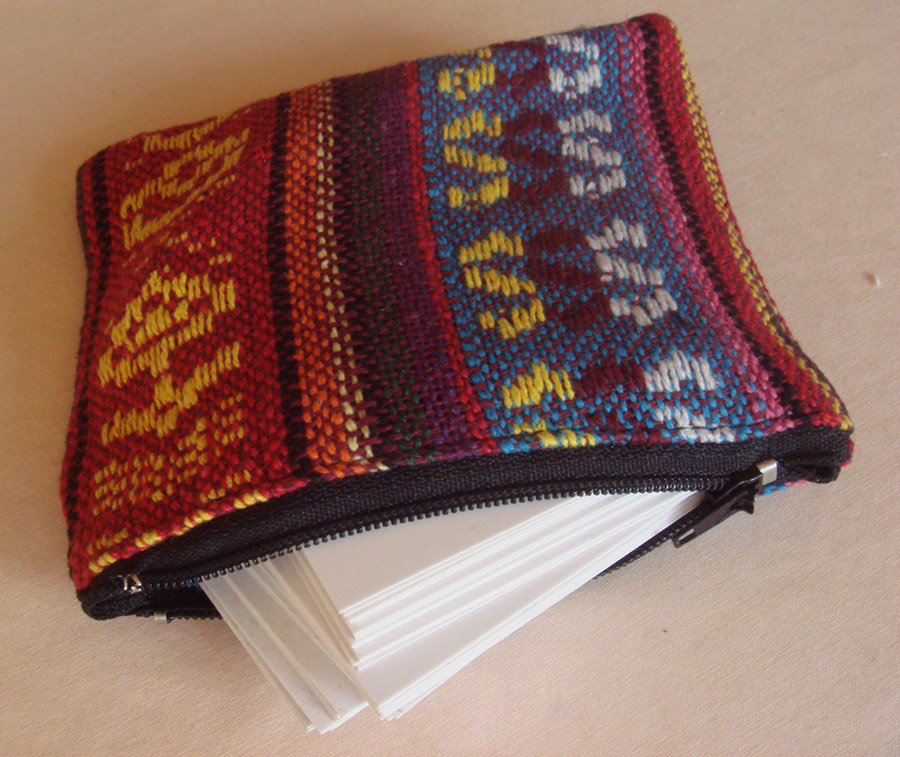
Before playing, we spread the cards with the back upwards, mix them by (smoothly) touching them in order to get into contact with the force they represent. Then, in a contemplating state, we ask a question, e. g.: Which force can I call to aid me in my work? Now, in a concentrated but playful mood, we await, until a card gets in ‘resonance’ to our question, and – lead by intuition – choose and turn it. The symbol can show us a soulpower, a transforming force, an aspect of ourselves, an ontological, an universal principle. With the help of Medhananda’s comments in the booklet and by insight into ourselves we try to perceive the answer, the hint the Game wants to give us. It is a playful way to become acquainted with the many soulpowers and subliminal parts of our being. The game is based on the recognition that behind the visible corpuscular reality there is a vibratory reality with force-fields influencing us and everything. Medhananda’s intention is to help us to become aware of those psychological and cosmic forces, and – by contemplating, evocating, exercising, exploring them – to grow more conscious of ourselves and the world around us and finally to become master of our being.
Medhananda writes about the Eternity Game:
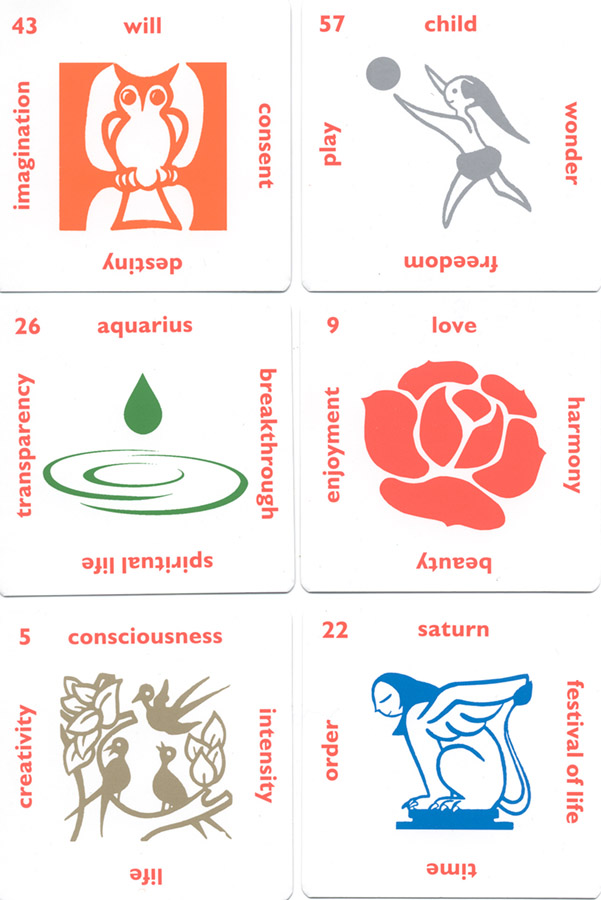
In the booklet, p. 9:
“The Eternity Game is an ontological and cosmological, a mythological and psychological game in which the mysteries and archetypes, the powers and forces, the kingdoms and dominions, chakras and avatars, the thrones and meditations, the samadhis and the illuminations are all brought to us through their symbols, so that we may become acquainted with them, know them, play with them. Slowly we are led to recognize them eventually as part of ourselves in that oneness of consciousness and life and bliss which we all are.
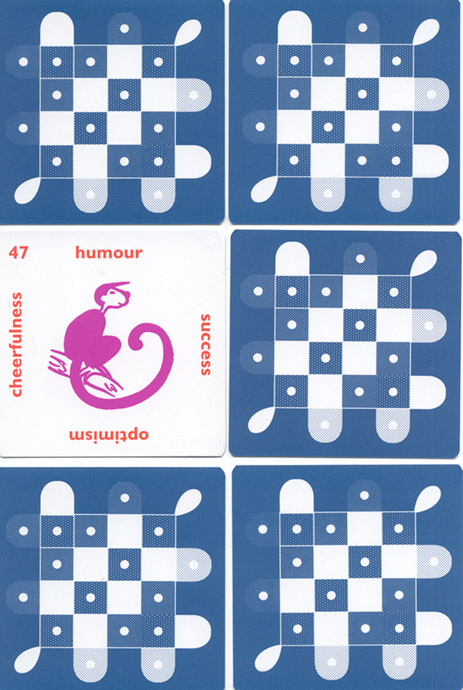
Come and play with the whole, the whole of the cosmos and of yourself. There is nothing in space or in the infinity of time whose play-companion you cannot become, and there is nothing within yourself which you need fear. This is the first of the space-age games which knows no rules but the truth, no limits but the infinite, and no walls but those which we have built around ourselves. In this game all the things we have separated – like knowledge and love, being and becoming, God and man – are whole again and one, and therefore you will find no negative cards, nothing to be afraid of, because in eternity even that which seems for a moment negative can be recognised as positive.”
In the booklet, p. 1:
“With a profound sense of obligation and reverence the author dedicates this game to his teachers Sri Aurobindo and The Mother […] The philosophy and psychology of the game are inspired by their luminous teachings. Medhananda, February 1973”
The four aspects of each symbol-card
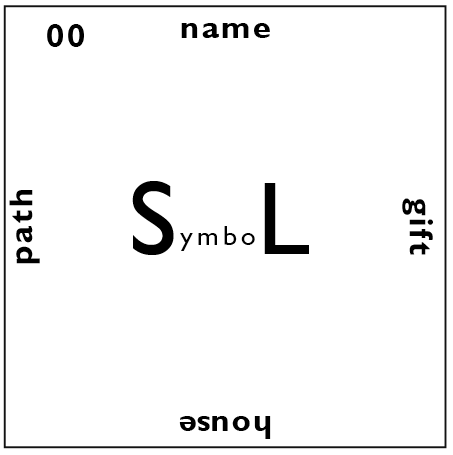
The name at the top of each card identifies the psychological or cosmic powersymbolised by the symbolic image in the centre. Each power or entity naturally has a home ground, a house, a psychological base, a seat within us. You will find it named at the bottom of the card…
The name and the house frequently indicate opposite poles. For example, the name of one card is ‘Cosmos’, but the seat or foundation of the cosmos in us is the ‘Microcosmos’, or the name of another card is the ‘One’, but its other pole, its home, is the ‘Many’.
The word on the left side of the card represents the advice of the card, the attitude you need to take or the way or path of knowledge or of work or of love which can lead you into a new freedom. This way or path you may call a yoga, a special discipline, a ‘pilgrimage’, which one follows in order to possess the perfection or the blessing or the gift or the ‘realisation’ as one says in yoga, which the card shows you on its right side.
To practise intuition, a state beyond ordinary consciousness
What being, consciousness and bliss are, neither philosophy nor science, religion nor occultism can tell us. No ratiocination, no ‘book-learning’, no dictionary, or grammar, can teach us here. But one by one we may meet their realities in our life by a living experience.
And the ‘Eternity Game’ can help us.
Eternity, infinity, ecstasy are all words whose purpose is not to explain anything but to call our attention to a limit, a boundary for the mind. We have to accomplish a quantum leap, and the ‘Eternity Game’ will help us to do it at the right moment.
Transcendence, resonance, presence call for ‘metanoia’[1], a state beyond ordinary consciousness. Let the game open our inner doors to it.
[1]Medhananda comments the greek word ‘Metanoia’: ‘meta’ (beyond) and ‘Nóos’ or ‘Nous’ (the mind).
Come and play with me!
I am a Meditation game: You can find yourself in me.
I am a game of Symbols: You can find the fullness of the universe in me
and you can meet the forces which direct the movements on the stage of life.
I am an Oracle game: You can ask me for the relations
between humans and forces or for your destiny.
I am a Transformation game: Your consciousness can awaken
with the movements of transformation, and become light and wide.
I am an Eternity game: I take you away from your day to day relationships
to confront your consciousness in relation to Eternity and Infinity, which are your home.
I am a Yoga of play, a path which can lead your consciousness to unity
and to the joy of the Divine’s play of hide and seek with the universe.
All is play, come and play with me.
